The French people in Normandy love our flag, especially in June. It hangs from shop windows, it flutters on restored army jeeps, it’s wrapped around babies and children in strollers, it’s sewn on sleeves of army jackets, and it’s printed on scarves tied around the necks of fashionable French women. Our American flag reminds them the freedom is not free. Specifically, the American flag of 1944, the one with 48 stars.
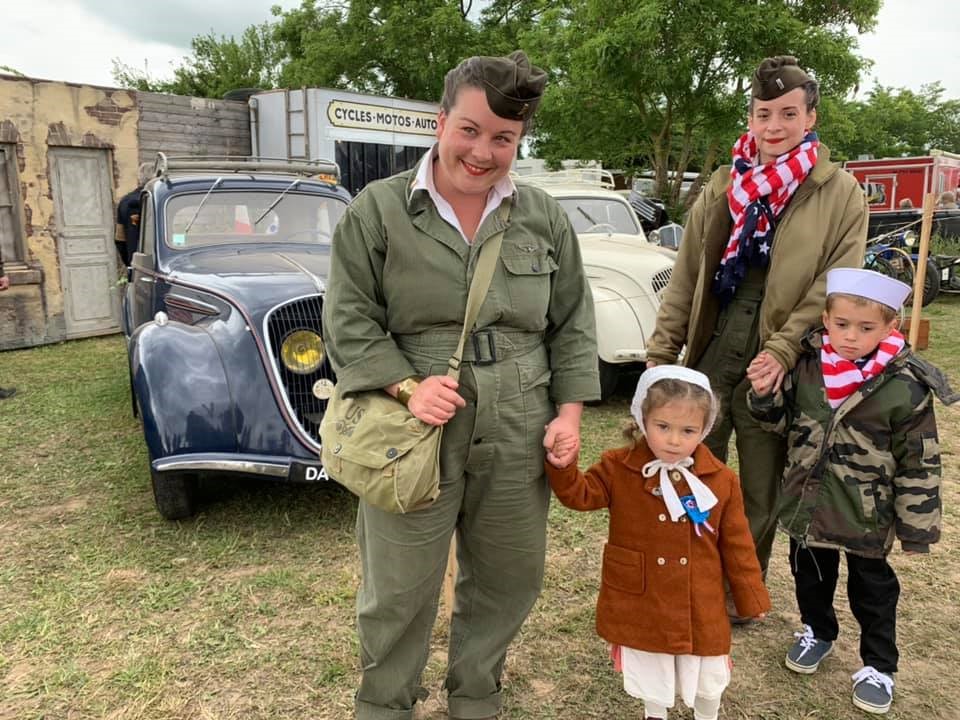
Those who lived in France in the 1940s experienced something very few Americans understand. They lived through occupation with a deprivation that we cannot imagine, and then they experienced the euphoria of liberation. Moving between those two events, the French were caught in the middle of two strong opposing armies. During the summer of 1944, many lost family members and property during the Allied bombings. The French eventually accepted their suffering at the hands of the Allies as the cost of freedom. They understood the Allied soldiers shared the cost of their freedom, some of them still in their teens, many who had volunteered to risk their lives and paid the ultimate price. The French could be bitter, but many have turned their bitterness about their loss into gratitude. They chose instead to tend the graves. Thousands of them. They still tend them today, and they are teaching the next generation to do the same.
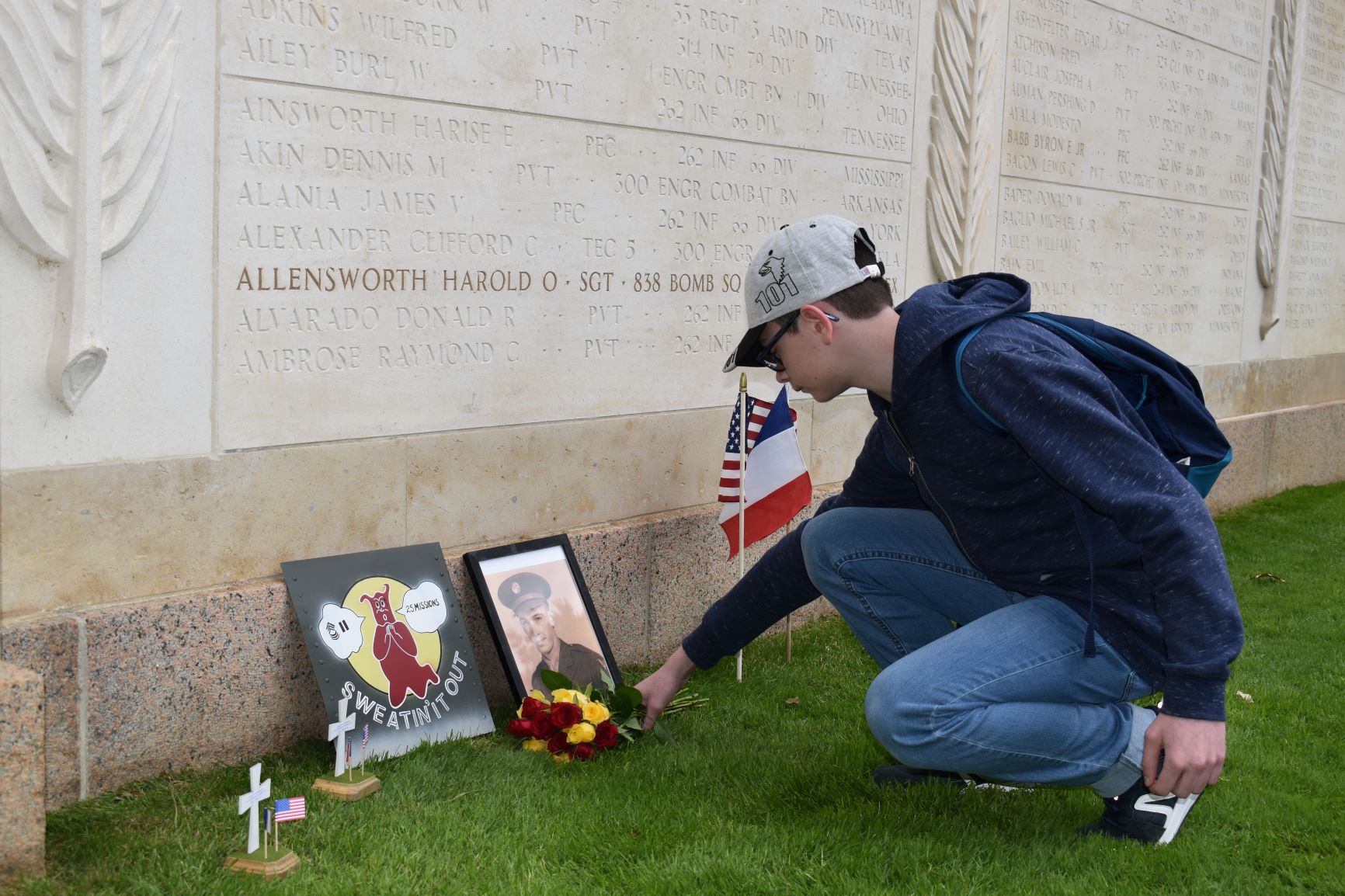
Honoring soldiers at the Wall of the Missing
I saw this with my own eyes this year as I traveled to Normandy for the 75th Anniversary of D-Day. While there, we attended a small echo taps ceremony at the Wall of the Missing honoring a young bombardier Harold Allensworth whose plane went down on D-day. We witnessed as a French father and son placed flowers next to his name.
To these French people, our flag represents not only freedom that is hard won, but also a commitment to remain mindful and grateful. They understand without our involvement; there might be no French language, no French culture, and no French people. The French hold our flag as sacred because they have seen America at her best.
This is a picture of my front porch. I bring out my flag decorations on Memorial Day and leave them up until September 11, Patriot Day. This week, we observe 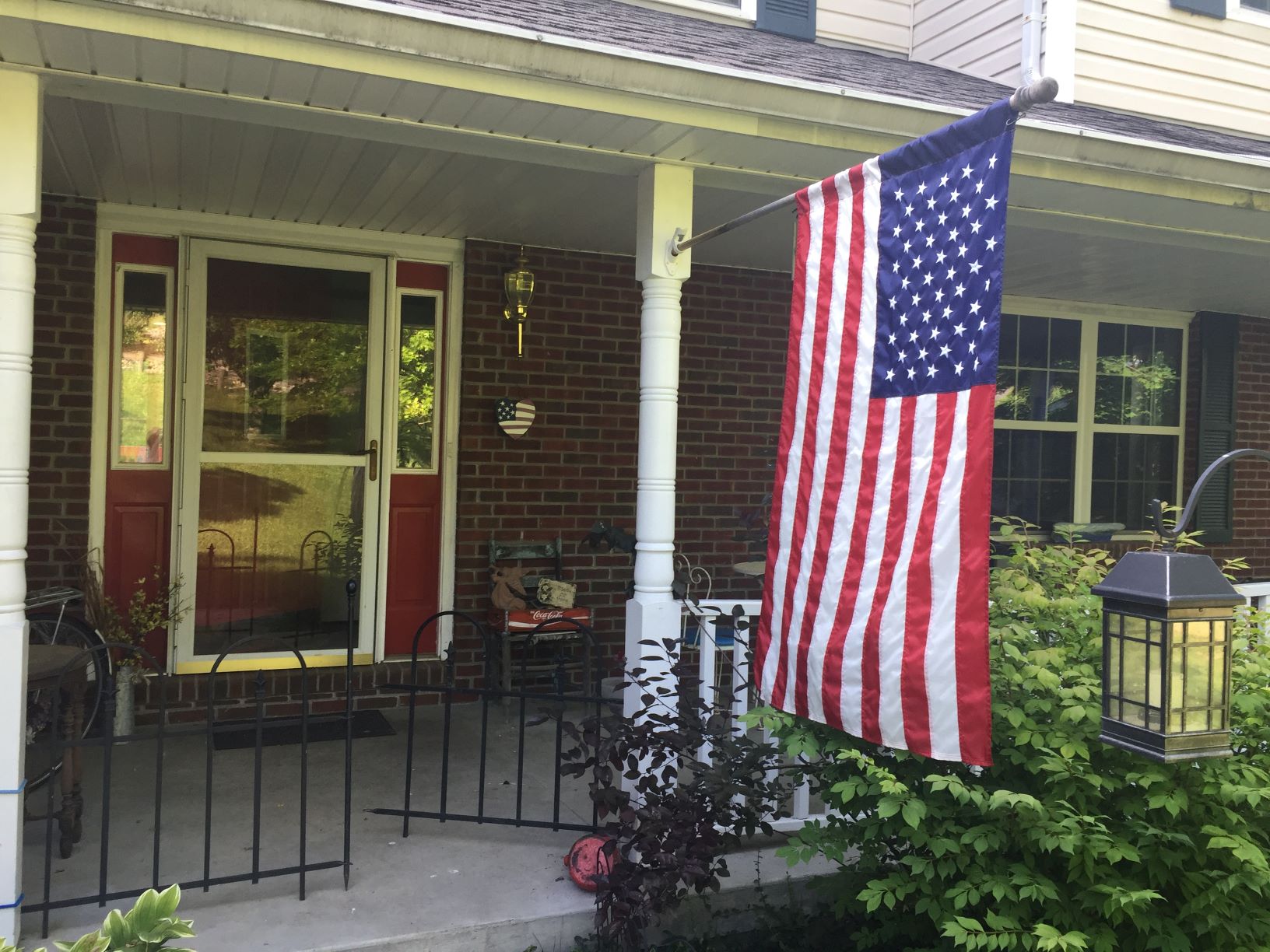 Independence Day, a perfect time to think a little more deeply about what our flag means, including the red, white, and blue elements of the flag itself. The Stars and Stripes is a powerful symbol for us as Americans, but many may not know that the colors are symbols as well. Red stripes stand for hardiness and valor, while the white stripes stand for purity and innocence and the blue stands for vigilance and perseverance.
Independence Day, a perfect time to think a little more deeply about what our flag means, including the red, white, and blue elements of the flag itself. The Stars and Stripes is a powerful symbol for us as Americans, but many may not know that the colors are symbols as well. Red stripes stand for hardiness and valor, while the white stripes stand for purity and innocence and the blue stands for vigilance and perseverance.
As I reflect on the flag as a symbol, two particular experiences come to mind. The first was in 1990-91, during the first Gulf War. I was in Germany as a student; our flag reminded me of who I was, and it reminded me of home. It stirred complicated feelings of pride, nostalgia, and patriotism. At the same time, it was mixed with a bit of confusion and fear. I was just 22, and I wasn’t exactly sure what I believed. I often spent time with those in the American military community. I prayed with those whose loved ones were deployed. Looking back, I can see the courage and valor of those red stripes in that military community.
The second instance that stands out to me was 10 years later, after the attacks on September 11, 2001. I remember vigilance and perseverance as symbolized by the blue in our flag. This attack was the closest we have come to war on American soil since the 1860s. Our flag was and is a reminder of those first responders who sacrificed their safety to save victims of terrorism. The vigilance and perseverance of the blue are exemplified in the actions of those first responders.
In these cases, our flag was a symbol of American pride, respect for those who serve, and a belief that our ideals are worth fighting for. We see American flags all over the US, especially this week. Let’s be careful not to let our flag be just something we use to decorate, along with Coca-Cola signs and Home Sweet Home plaques. Let us be inspired live up to the ideals represented in the flag, ideals like courage, pure intentions, and justice. Let us take the example of the French, and be mindful and grateful for the many people whose lives demonstrate those values.
After listening to WW2 veterans and hearing the stories of the French people they liberated, I will now see something else reflected in the flag. When I think of our flag, I will remember seeing thousands of them loving placed on the graves at the Normandy American Cemetery. I will see it suspended behind the bronze statue, the Spirit of American Youth Rising from the Waves on June 6, 2019.
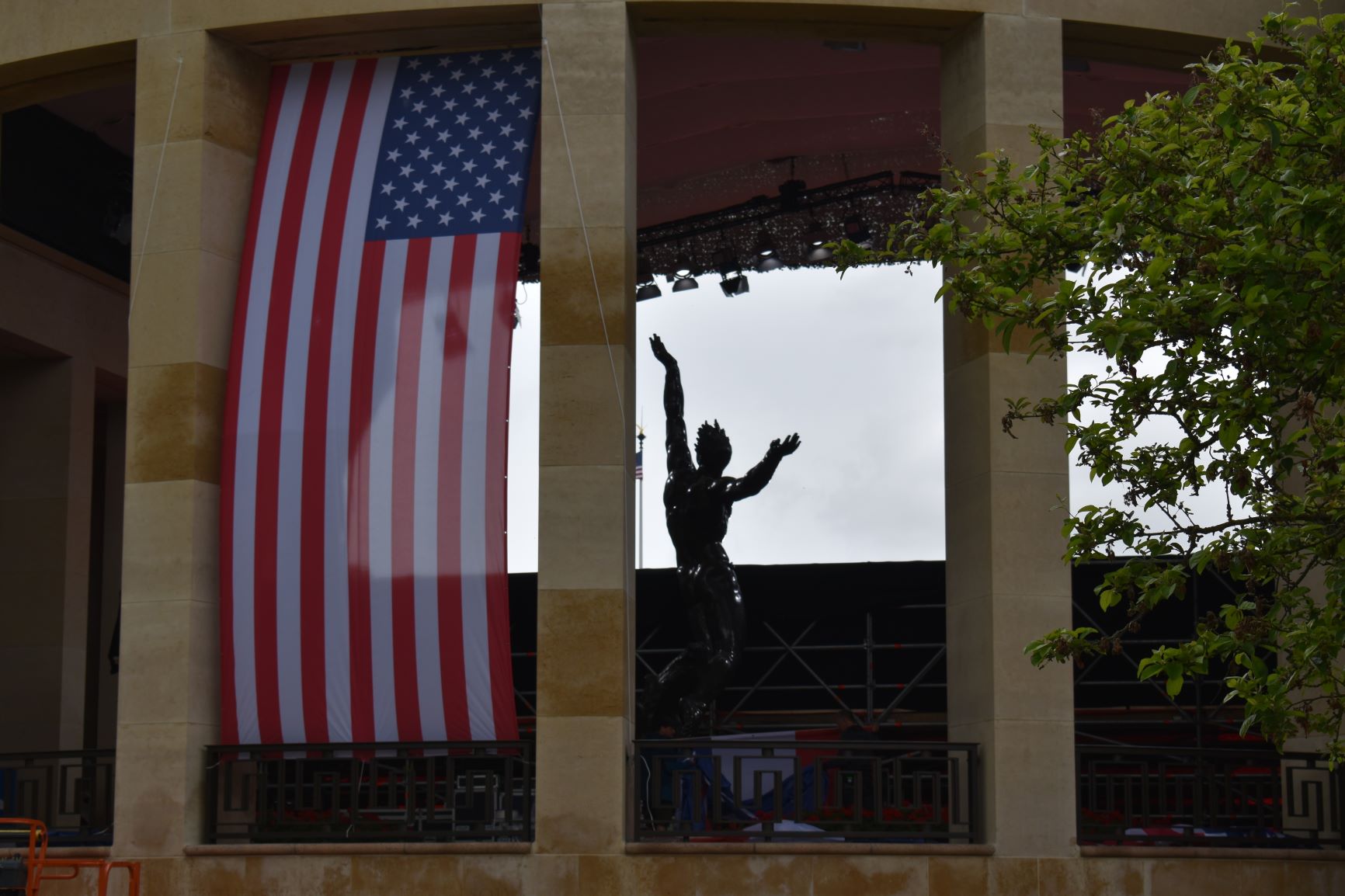
I see it next to the French flag at Utah Beach.
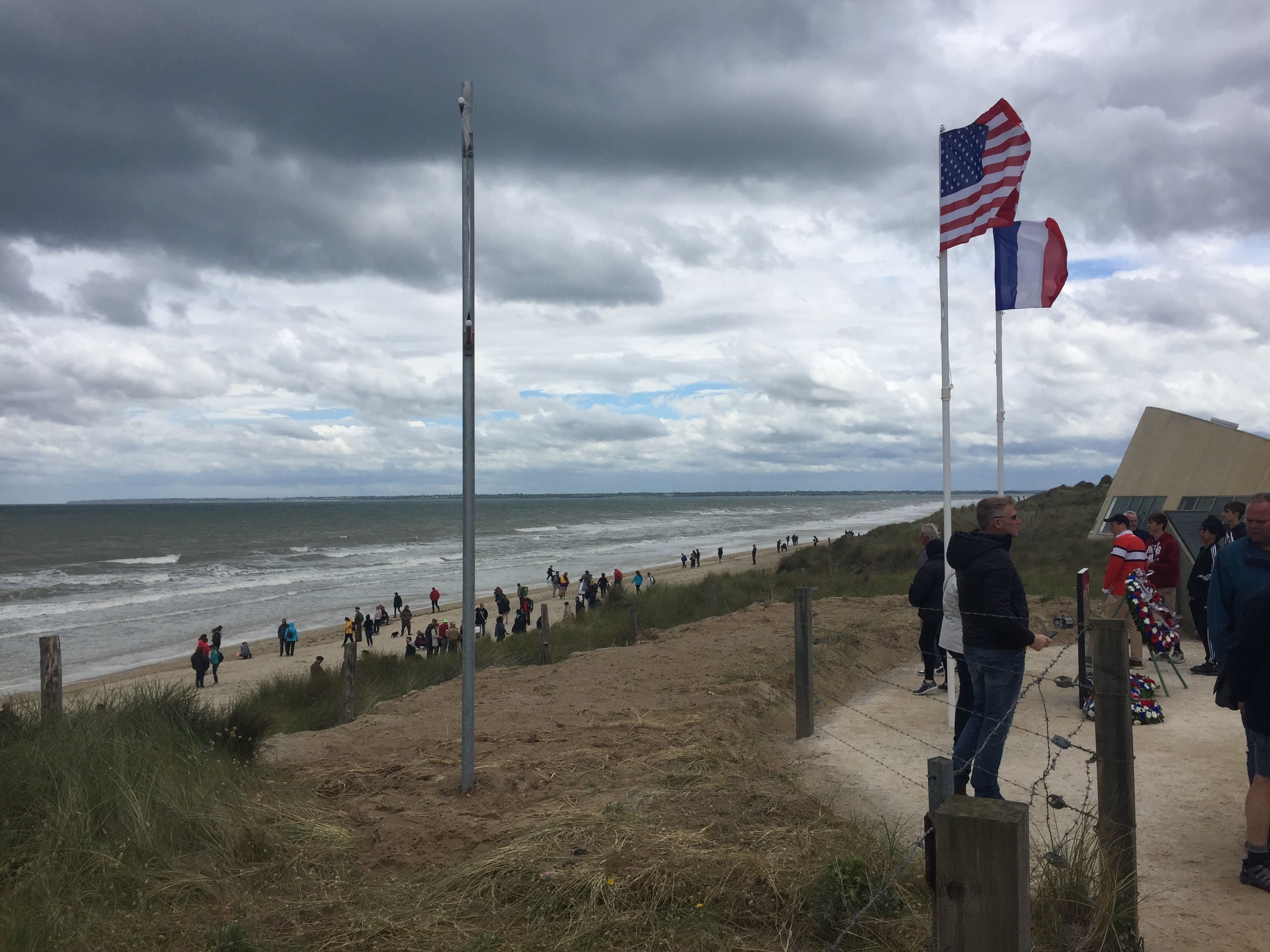
I see it on a wreath at the monument at Pointe du Hoc on the grey, windy day when we visited, when a vet told us the weather was just like that in 1944.

And I see the innocence of the smile of The Girl Who Wore Freedom, Dany Patrix, which must have inspired young battle-worn soldiers of the reasons for their courageous sacrifice for freedom.
(For a quick summary of some of the history of the symbolism read the 2013 Time article “Why the US Flag is Red White and Blue” http://swampland.time.com/2013/07/04/why-the-u-s-flag-is-red-white-and-blue/).
This post was authored by:


Laura,
This is a fantastic article. Thank you for writing it. I am looking forward to seeing the film.
Never forget! Great work Laura.
Thanks for leaving a comment, Rick! We’re super excited about bringing this film to a larger audience!
As I decorated my house with traditional red, white, and blue for the 4th of July, this article helped remind me of the significance of those colors. I am also reminded of the sacrifices made by our veterans, some very young, to preserve our freedom and that of France. I have to admit that I wasn’t feeling particularly patriotic as the 4th approached this year. This article helped renew my pride in the past and my hope for the future. Thank you, Laura, for writing this wonderful article.